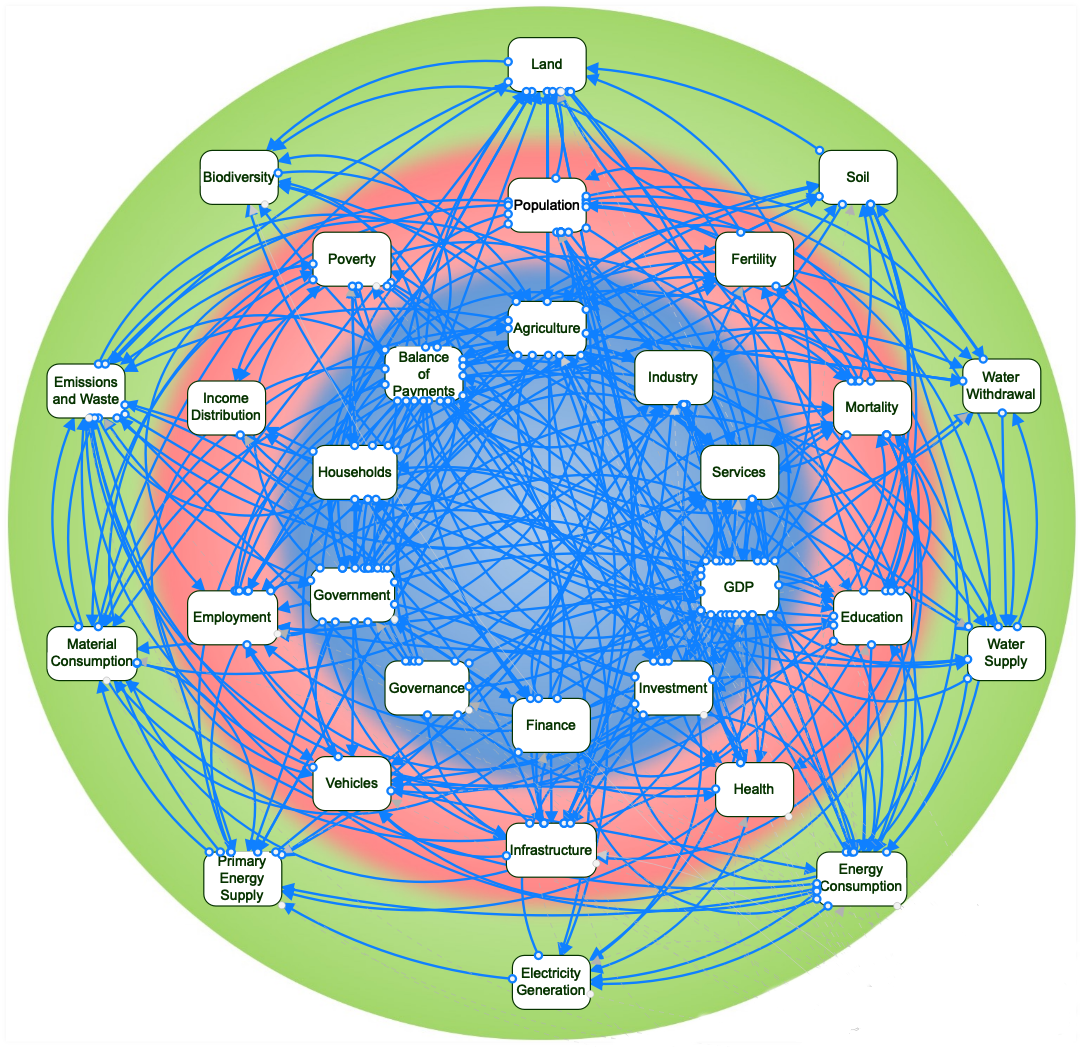iSDG Sectors¶
As a result of the variety of issues considered, iSDG is considered in its category to be a large-sized model: it includes over 3600 stock (state) variables and several thousand feedback loops. Given the size and the level of complexity of the model, its structure has been reorganized into smaller logical units, labeled as sectors. A sector can be thought of as a mini-model with internal mechanisms that can be understood in isolation from the rest of the model. The size of a sector is chosen in consideration of the amount of information that the user can take in at once, and to fit the size of standard computer monitors. The base iSDG model is composed of 30 sectors.
The 30 sectors are coarsely categorized into 10 social sectors, 10 economic sectors, and 10 environmental sectors. The sectors interact with one another dynamically through a complex network of feedback loops. The selection of the sectors is based on the desired ability of the model to properly track the SDGs and simulate relevant policies.
Social |
Economy |
Environment |
|---|---|---|
The scope of each sector is reflected in the name used to identify it. Although the names of some sectors are similar to the definitions of some of the SDGs, there is no close association between sectors and Goals: normally, the indicators used to monitor a Goal are calculated across various sectors. The overview below provides a graphic representation of the 30 sectors and their affiliation to the environmental sphere (outer green circle); the social sphere (middle red circle); and the economic sphere (inner blue circle) [1]. For simplicity, the overview does not include the connections among sectors, which form a complex network of feedback loops that determines the system’s behavior over time. From the model’s perspective, economic activities take place within the society (from which social resources are drawn in order to generate economic value); and the broader natural environment (source and sink of natural resources, emissions, and waste). The accumulation of socioeconomic resources, and the use of environmental resources, drives development, which in turn generates further socio-economic resources that further the development process.

In the next three sections of this documentation, a description of the particular assumptions and formulations used in each sector is provided. The structure of the individual sectors is based on well-established research, integrated with applied research performed by the Millennium Institute’s modeling team. The major distinctive characteristic of iSDG lies in the way the various sectors are linked together, forming a complex network of feedback loops that is the determinant of the model’s behavior.
